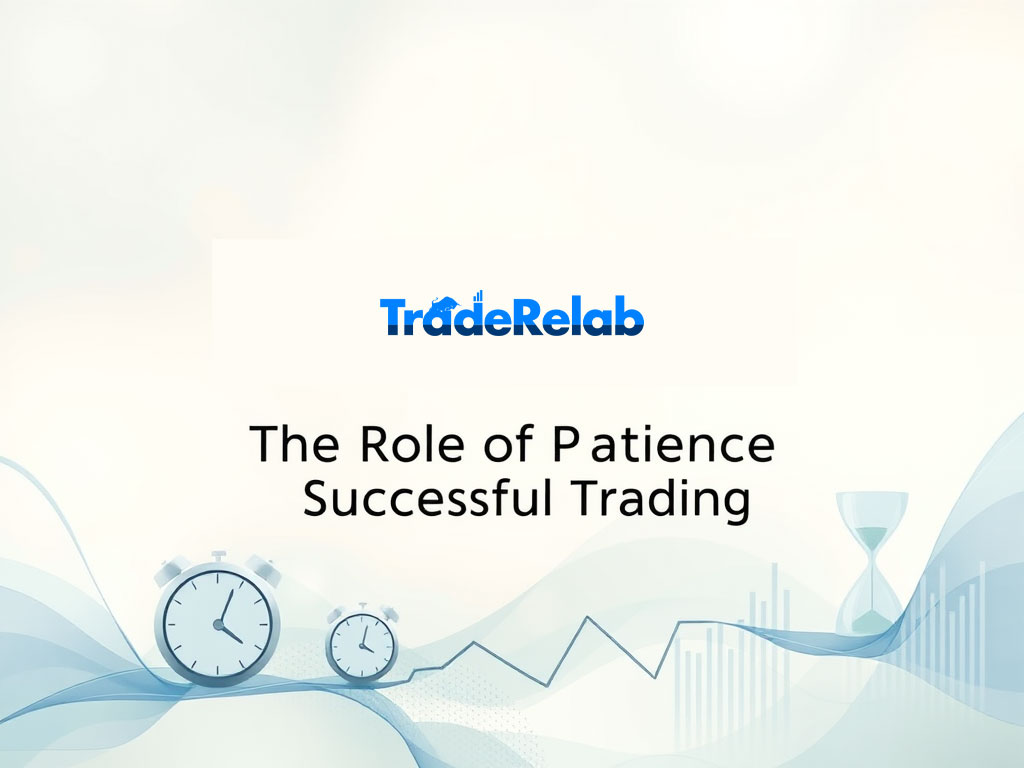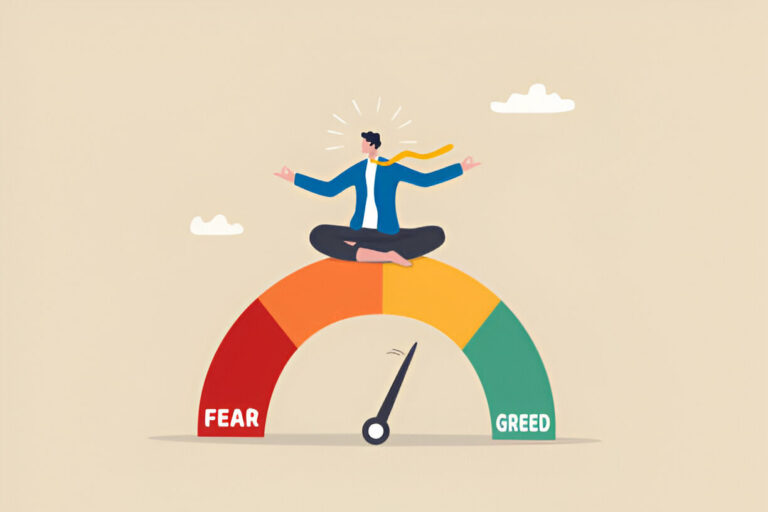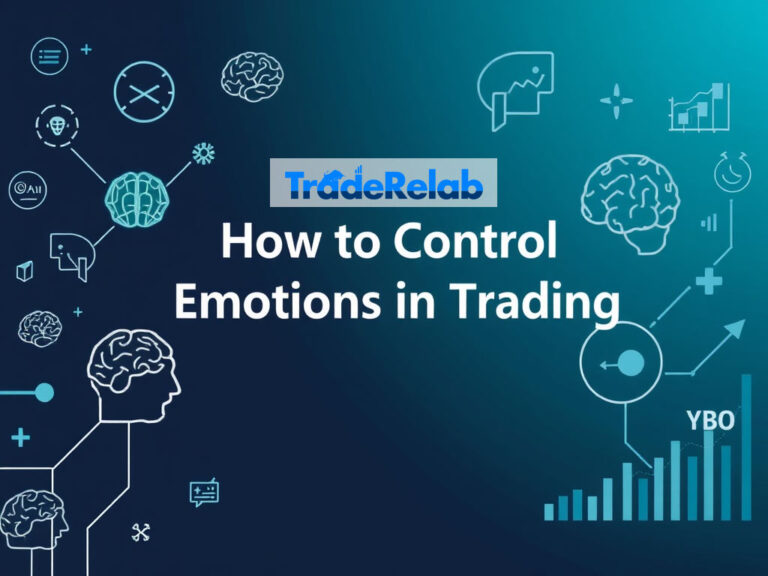The Role of Patience in Successful Trading

In the fast-paced world of trading, where markets are constantly fluctuating and opportunities seem to appear and disappear in the blink of an eye, one quality stands out as essential for long-term success: patience. While many traders focus on technical analysis, chart patterns, and market signals, it’s easy to overlook the fundamental role that patience plays in making sound, profitable decisions. In this article, we’ll explore how patience can make a significant difference in your trading journey and why it’s a key element for success.

Understanding Patience in Trading
Patience in trading is the ability to wait for the right opportunities, follow your strategy without rushing into decisions, and avoid impulsive actions that might lead to unnecessary losses. It is not about being passive; instead, it’s about being disciplined and waiting for the market conditions to align with your strategy.
The best traders understand that the market does not offer opportunities every moment, and forcing trades when there are no clear setups will only lead to poor performance. Patience is not simply about waiting; it’s about knowing when to act and when to stand still.
Why Patience Is Critical in Trading
1. Avoiding Emotional Decisions
One of the greatest challenges traders face is overcoming their emotions, especially fear and greed. When the market moves unexpectedly, emotions can trigger hasty decisions—such as entering a trade too soon or exiting too early—leading to losses. By cultivating patience, traders can prevent emotional reactions from influencing their trading decisions.
Emotional trading often results in “chasing the market,” where traders jump into trades based on fear of missing out (FOMO) rather than a well-thought-out plan. This approach can quickly lead to disastrous consequences. Patience, on the other hand, helps traders to stick to their strategies and avoid acting impulsively.
2. Waiting for Clear Setups
A common mistake among novice traders is to feel the need to trade constantly, even when there is no clear opportunity. In reality, trading should not be about the frequency of trades, but rather the quality of trades. By exercising patience, traders wait for clear, high-probability setups based on their trading strategy. This increases the likelihood of a successful trade and helps reduce the overall risk.
When you wait for the right setups, you are allowing your strategy to work for you. Trading without clear setups often leads to unnecessary losses or break-even trades that don’t add value to your overall performance.
3. Managing Risk and Avoiding Overtrading
Overtrading is a common problem for many traders. It occurs when traders try to compensate for previous losses or attempt to “make up” for missed opportunities. Overtrading is usually fueled by impatience and can quickly erode a trader’s account. By practicing patience, traders avoid the temptation to trade too frequently or in situations where the risk is too high.
Patience allows traders to wait for low-risk, high-reward opportunities, which is a more sustainable approach to trading in the long term. Successful traders often have strict rules about how many trades they will take within a given time frame and only trade when the market conditions fit their criteria.
4. Avoiding the Urge to Check Prices Continuously
In today’s digital world, traders often feel the need to check prices and news every few minutes. This constant need for information can lead to impulsive decisions. By practicing patience, traders resist the urge to over-monitor the market and instead focus on their overall strategy. This removes the temptation to act on short-term fluctuations, which can often be misleading.
Instead of constantly watching the markets, successful traders take a step back and allow their strategies to play out without interference from every little price movement. This patience allows them to avoid unnecessary trades and reduce the impact of noise on their decisions.
The Role of Patience in Different Trading Styles
Patience plays a critical role in all forms of trading, though the way it is applied may vary depending on the style of trading:
1. Day Trading
Day traders buy and sell assets within the same trading day, often making multiple trades throughout the day. Despite the fast pace, patience is still essential for day traders. They must wait for clear entry and exit points based on technical analysis, avoiding emotional decision-making and impulsive trades. Even in day trading, not every market movement is worth acting upon.
2. Swing Trading
Swing traders aim to capture short- to medium-term price movements, holding positions for a few days or weeks. For swing traders, patience is necessary to allow their trades to develop. They need to be patient with the market’s natural ups and downs and resist the urge to exit a position prematurely when there are no immediate gains.
3. Position Trading
Position traders hold trades for weeks, months, or even years. In this style of trading, patience is crucial as traders must wait for long-term trends to materialize. They do not worry about short-term market fluctuations but instead focus on the big picture. Patience in position trading allows traders to weather the market’s volatility without making knee-jerk reactions.
How to Develop Patience as a Trader
Patience is a skill that can be cultivated over time. Here are some strategies to help you develop patience in your trading:
1. Create a Trading Plan
A well-defined trading plan can give you the confidence to wait for the right opportunities. A plan should outline your entry and exit criteria, risk management rules, and trading goals. With a clear plan in place, you can avoid making decisions based on emotions and instead focus on executing your strategy.
2. Practice with Demo Accounts
Before risking real money, practice trading in a demo account. This allows you to experience market conditions without the emotional stress of real money. Use this time to hone your patience and practice waiting for the right trades. Over time, this experience will help you develop more confidence in your decision-making process.
3. Embrace Risk Management
One of the most important aspects of trading is managing risk. Set clear stop-loss levels to protect your capital and avoid making trades that exceed your risk tolerance. By following solid risk management principles, you can avoid the temptation to overtrade or take unnecessary risks.
4. Focus on the Long-Term Goals
In trading, it’s easy to get caught up in short-term gains or losses. However, successful traders focus on the long-term goals of profitability and risk management. By keeping your eyes on the bigger picture and not on every individual trade, you can maintain your patience and stick to your strategy.
Conclusion
Patience is more than just waiting for the right trade; it’s about cultivating discipline, managing emotions, and sticking to your strategy through all market conditions. Successful traders understand that the key to consistent profits lies not in how often you trade, but in how carefully you select your opportunities. By developing patience, you can avoid impulsive decisions, minimize risk, and increase the likelihood of long-term success in the market.
FAQ:
1. Why is patience so important in trading?
Patience helps traders avoid emotional decisions, manage risks, and wait for high-quality setups that align with their strategies. It is essential for avoiding impulsive trades and achieving long-term success.
2. How can I become more patient in my trading?
To develop patience, create a clear trading plan, practice with a demo account, implement risk management strategies, and focus on long-term goals rather than short-term results.
3. Does patience work in all types of trading?
Yes, patience is crucial in all types of trading, whether you’re day trading, swing trading, or position trading. It ensures that you make thoughtful decisions based on strategy rather than emotions.
4. Can impatience lead to losses in trading?
Yes, impatience often leads to emotional decisions, overtrading, or taking on excessive risks, which can result in losses. Patience helps mitigate these tendencies and leads to more consistent, profitable trades.






